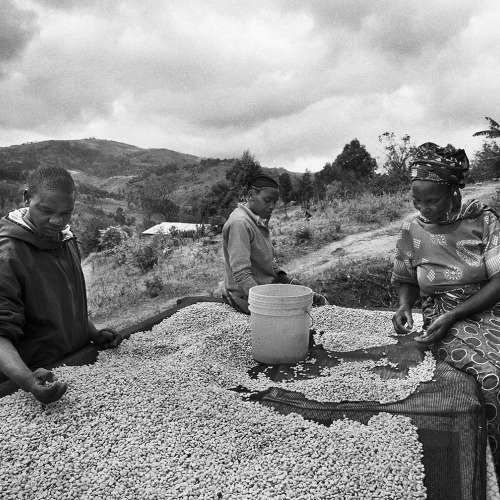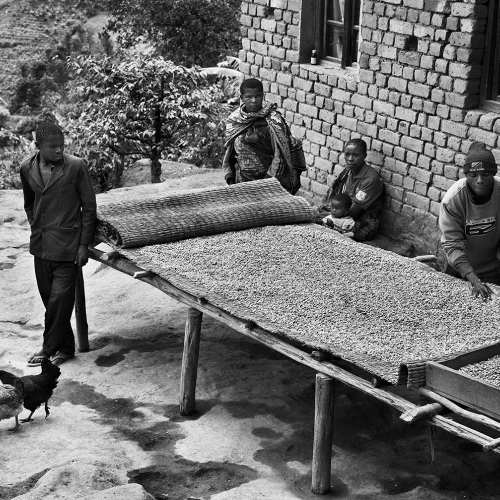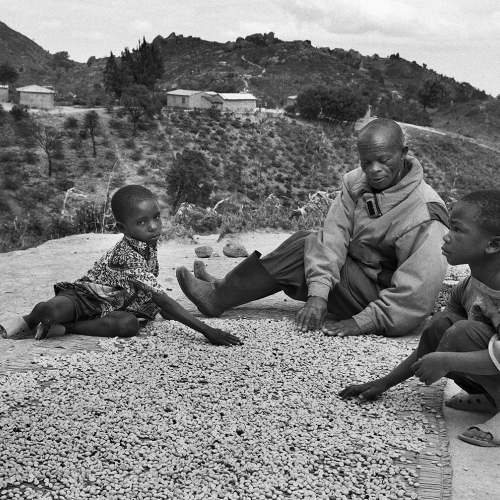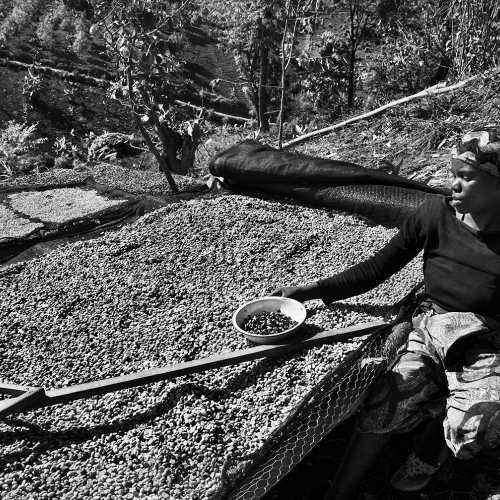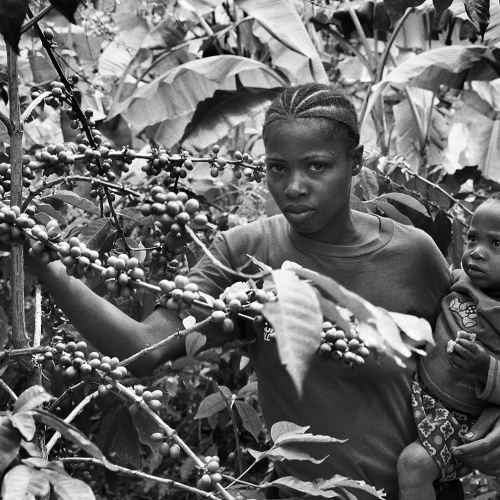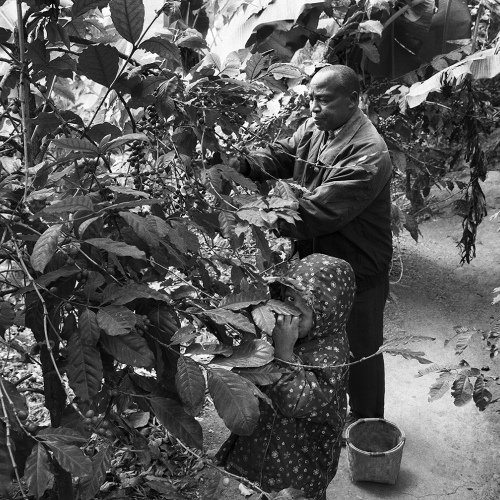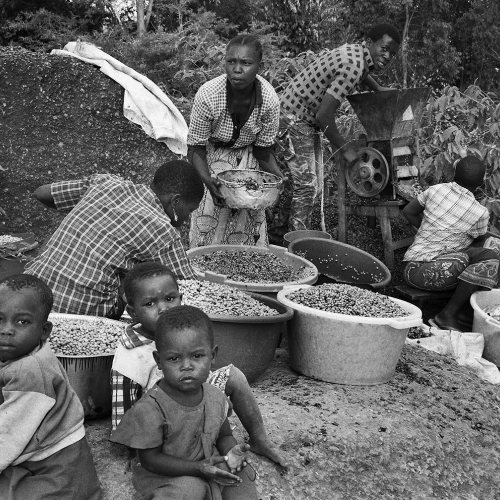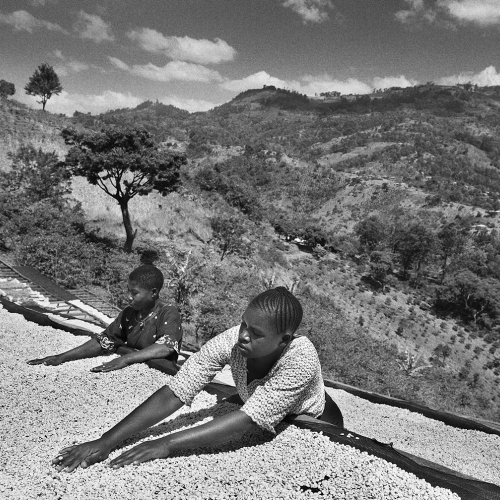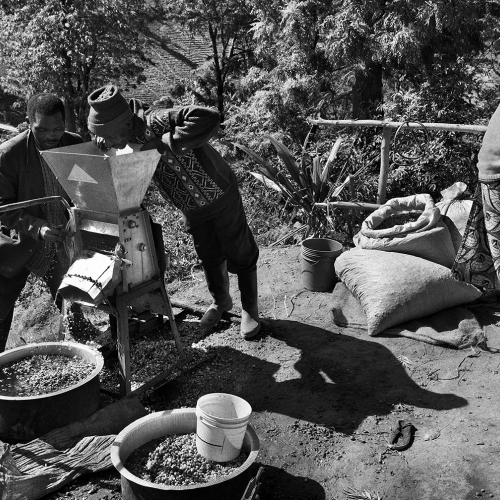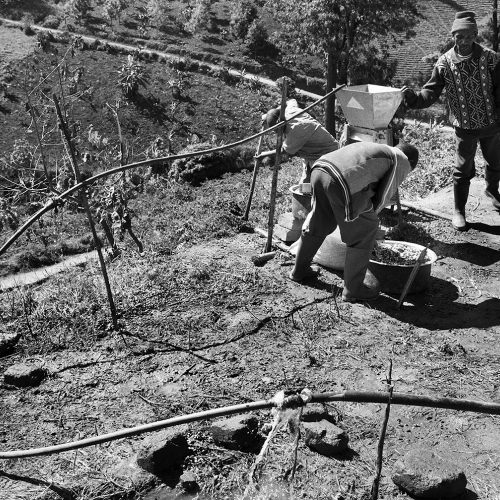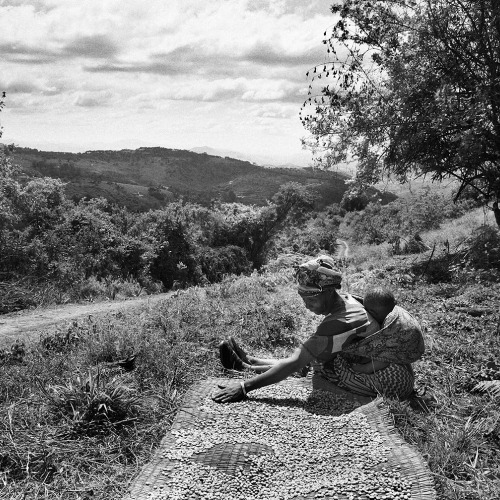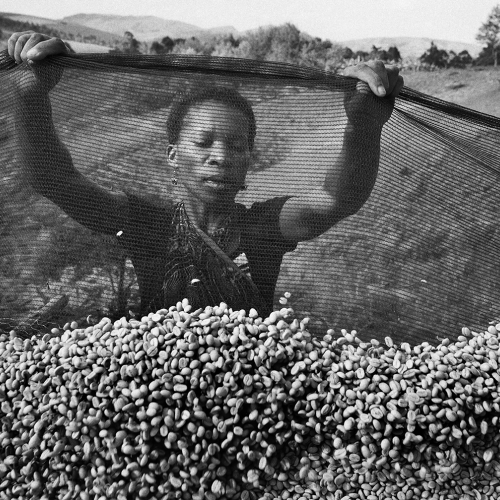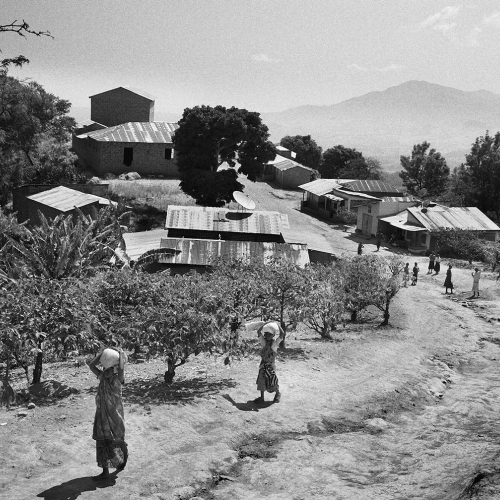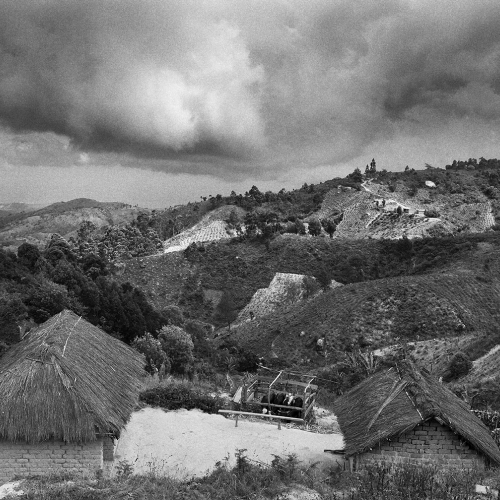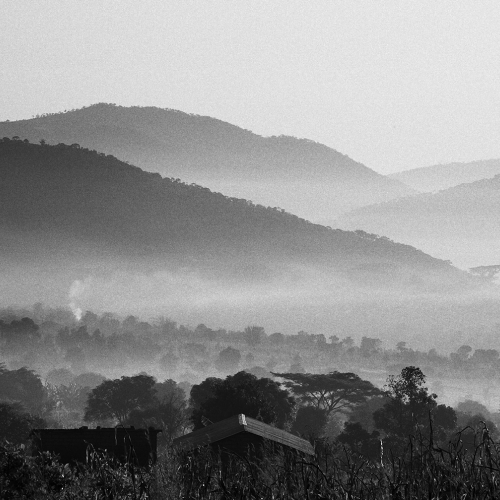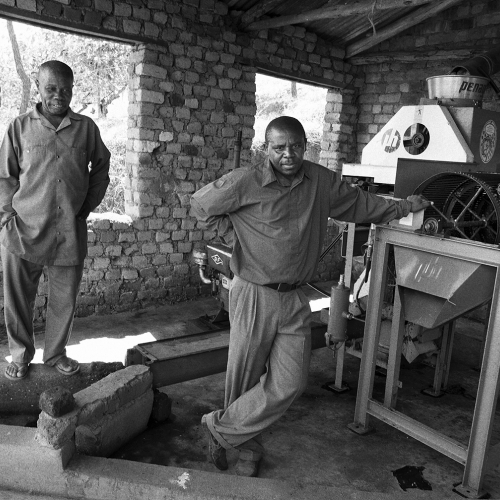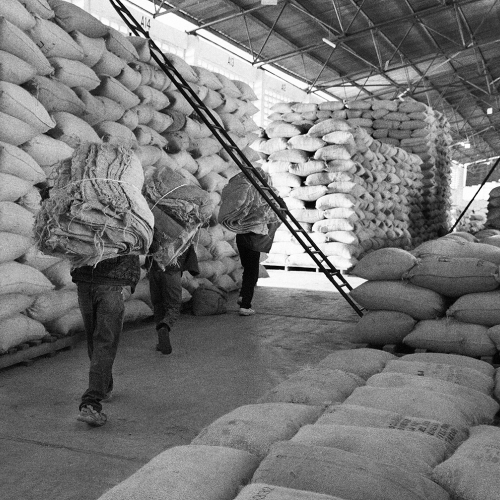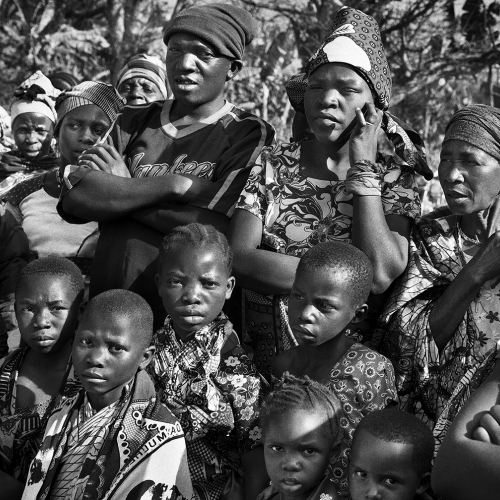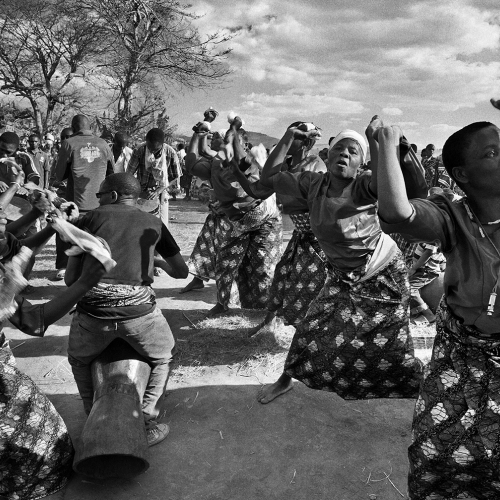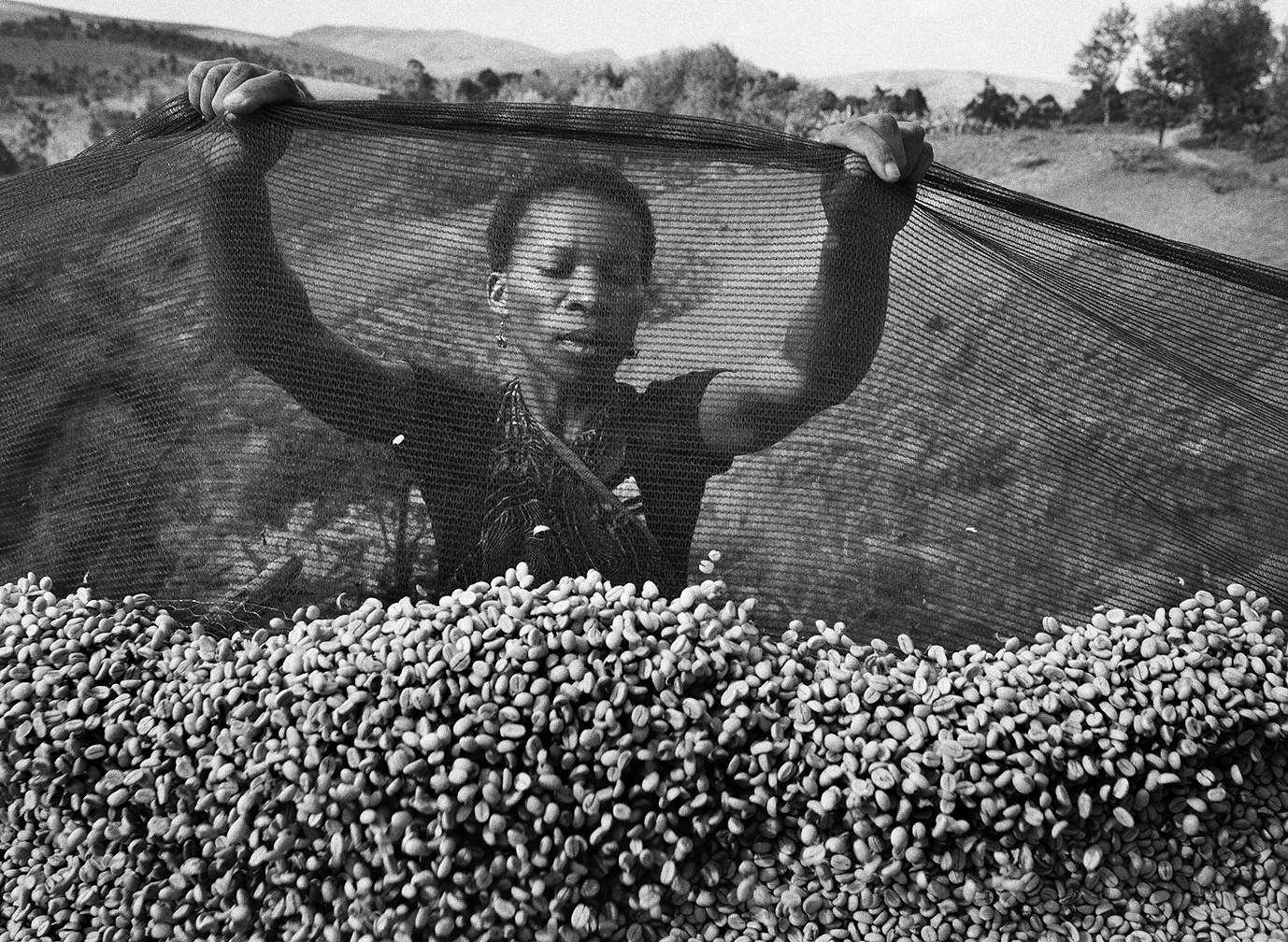Tanzania
Did you know?
About
Tanzania lies on the coast of East Africa and includes Zanzibar in the Indian Ocean. Most of the mainland is savannah plateau lying east of the great Rift Valley. In the north are Mount Kilimanjaro and the Serengeti National Park.
The climate is tropical and most people live on the narrow coastal plain or in the north. The economy is mainly agricultural. Coffee, cotton and sisal are the main exports, with cloves from Zanzibar. Agricultural processing and diamond mining are the main industries, though tourism is growing.
Both Arabica and Robusta
Smallholders (owning less than 2 ha) represent 80% of the Tanzanian coffee production. They grow Arabica and Robusta, whereas the large growers only grow Arabica and process them into washed coffees
Tanzania has the potential to produce about 144,000 ton of coffee annually but has in recent years struggled to reach 55,000. While some of the blame can rightly be attributed to the influence of the El Nino weather patterns such as droughts followed by heavy rains, these phenomena are normal in Tanzania and happened long before coffee was planted. What caused the drastic reduction in both the area and yield, was the incredible misfunctioning of the various official marketing boards.
Most of the coffee growers combine production of coffee and bananas, where banana trees provide shade to the coffee trees. The role of coffee is predominantly in providing cash income.
The result was a dramatic and ongoing decline in coffee as growers concentrated on food crops to survive. While there were some improvements, following government policy changes for a more market oriented economy and the licensing of independent coffee traders, the damage done to the industry will take decades to restore.
Coffee facts
Crop Periods
Flowering Period |
|
Main : From May until July in the north. From September to November in the south |
Harvesting Period |
|
North : October until March |
|
South : From June until August |
Shipping Period |
|
Main: From February until September |
|
Secondary: From September until March |
The Robusta harvesting period is from June to September, their exports from August to February. Robusta represents 25% of the crop.
Transit days
|
Port of Shipment |
Imp. |
EU |
US |
|
Dar es Salaam (1) |
30% |
45 |
45 |
|
Tanga |
70% |
30 |
30 |
(1) About port Dar-Es-Salaam
The costs to bring coffee from Mbinga and Mbeya, in the south, are high due to the transport costs, the distance from any producing region toward Dar-Es-Salaam is minimum 600km and as far as 1’500km
One of the challenges is the difficulty to find reliable transporters to truck the coffee internally.
Countries of Export
1. Germany
2. Japan
3. USA, Australia, Belgium
ICO Figures
Classifications
By region
The North-Western Zone (Kagera, Kigoma & Mwanza area) produces 37% of the nation's crop. Washed Arabicas as well as unwashed Arabicas and Robusta. Mwanza zone is close to the Kenyan border and at the feet of the Kilimanjaro.
The Northern Zone (Lake Victoria) is famous in the coffee world since it is the place where Bukoba Robusta is produced. Those Robustas have the reputation of being extremely neutral in cup.
The regions include Kilimanjaro, Arusha/Moshi, Tanga and Morogoro.
The Southern Zone (Lake Rukwa) is close to the Zambian border. They produce close to 40% of the national crop, all washed Arabicas.
Robusta
Kagera : North west tip close to uganda is 100% robusta - about 500 000 bags produced yearly.
Arabica
Kilimanjaro and northern Karatu (North / North East)
Production is stable at around 125’000 bags between two regions northern Kilimanjaro and northern Karatu larger estates growing and coops / small producers disappearing as big impact of climate change water
resources are less and less and only estates have resources to build water tanks and spread the supply to trees when needed
Kigoma : West / produces about 15’000 bags
Mbeya (South)
Mbeya 180’000 bags production
Mbinga produces about 190’000 bags growing production as very remote not so many other options for farmers
Coffee use to be very fruity and dirty now cup is getting better every year
By defects
Robusta (per 300 gram of processed coffee)
|
Extra Superior |
clean and dry coffee beans of good appearance for the grade |
|
|
|
Superior |
clean and dry coffee beans of good appearance for the grade |
|
|
FAQ |
clean and dry coffee beans of good appearance for the grade |
|
|
SUG & UG |
clean and dry coffee beans of good appearance for the grade |
|
|
TRIAGE |
clean and dry coffee beans |
|
|
Defective Points |
Black means a bean of which more than half is black externally. Pod means the whole dried coffee cherry. Stinker means coffee coloured bean which has a sour or unpleasant smell when cut. Badly insect damaged bean means of which half or more is damaged by pests or diseases. Half black means bean which is dark brown and a bean of which less than half is black externally, Parchment means enclosed in its parchment integument. Abnormally pale bean means a chalky white bean. Shell means a hollow malformed bean in the shape of a shell. Broken bean means less than half a bean. Immature bean means flattened bean which contains no kernel. Shrivelled bean means a bean, which is desiccated, shrivelled and often also corrugated or ridged on the surface. Discoloured bean means a mottled bean, which is desiccated, shrivelled and often also corrugated or ridged on the surface. Slightly insect damaged bean means a bean which is pinholed by insects or a bean of which less than half has been damaged by pests or diseases. |
Arabica
(no defect count for washed arabicas but classification on aspect of the coffee raw and roasted + cup charactreristics)
| UnWashed | FAQ (Bukoba) |
| UG (Ungraded) | |
| Washed |
AA |
|
|
|
A |
|
|
|
AMEX |
This type was created by some exporters especially for ICO non-member consumer nations when quotas were still in force. |
|
|
B |
|
|
|
C |
|
|
|
PB |
|
|
|
E |
|
|
|
AF |
Light beans. blown during sorting of AA's and A qualities. |
|
|
TT |
Light beans. blown during sorting of B qualities. |
|
|
T |
Light beans. blown during sorting of C qualities. |
|
|
F |
Very light beans blown during re-sorting of AF+AT+T |
|
|
HP |
Hand picked: Defects eliminated by handpicking or electronic sorting. |
By screensize
| Arabica | AAA | Retained minimum 95% of screen 20 Maximum 5% of screen 18 Maximum 2% of screen 17 |
| AA | Retained minimum 90% of screen 18 Maximum 8-10% of screen 17 Maximum 2% of screen 15 | |
| A | Retained minimum 90% of screen 15/6 Maximum 2% of screen 14 | |
| B | Retained minimum 90% of screen 15/6 | |
| C | Retained minimum 90% of screen 14 Maximum 10% of screen 13 | |
| PB | Retained minimum 95% of PBscreen 14 Maximum 5% float beans | |
| AF | Retained Minimum 90% screen 17 Maximum 8-10% screen 15/6 Maximum 2% screen 14 | |
| TT | Retained Minimum 90% screen 15/6 Maximum 10% screen 14 | |
| E | Retained Minimum 90% screen 18 Maximum 10% below Nothing below screen 15 | |
| Robusta & Unwashed | Superior | Maximum 5% below screen 16 |
| FAQ & SUG | Maximum 5% below screen 14 | |
| UG | Maximum 10% below screen 13 | |
| Triage | to be equal to a sample approved from time to time by the Tanzania Coffee Board |
Typical description
![]()
Tanzania Bukoba Rob UG
Tanzania Arabica AB FAQ South
Processing
|
Picking |
Handpicking |
|
Washing |
Dry and wet method |
|
Fermentation |
48 hours |
|
Drying |
In the sun on stagings covered with hessian cloth |
| Sorting | Mechanical cleaning and electronic sorting |
Nice to know
Above is for washed Arabicas, Robustas are dried in cherry in the sun and later on milled to remove the outer hard skin and the husks.
Coffee Environment
About exporters
Licensed coffee exporters purchase coffee at auctions which are held every Thursday by the Tanzanian Coffee Board in Moshi. The coffees are stored in licensed coffee warehouses in the interior and are released to the auction buyer upon payment of the invoice from the Tanzania Coffee Board.
During the time of shipment the Tanzania Coffee Board has to approve a document called "Coffee Export Approval" which is completed by the exporter, giving full details of the parcel to be exported.
The producer can sell his coffee either directly to private companies or to cooperative unions.
Official statistics show that 200.000 Tanzanian families are involved in the production of Arabica coffee, and another 70.000 produce Robusta in the Kagera region. Kagera is well equiped to increase and process Robusta production, as it has six factories with a capacity of 35.000 ton. Germany is the main market for Kagera-grown Robusta, with smaller amounts purchased by British companies. Robusta accounts for about 25% of Tanzania's coffee production.
Cooperatives favour placing industry modernisation and agricultural research under the control of a parastatal organisation like the Tanzanian Coffee Board (TCB), the current regulator of the industry. Recent statistics however have shown that the private trading sector is currently handling close to 80 per cent of the total national crop. This except for the region of Kagera where cooperatives handle most of the local Robusta. The success of the private sector has been mainly due to their reputation of paying promptly.

